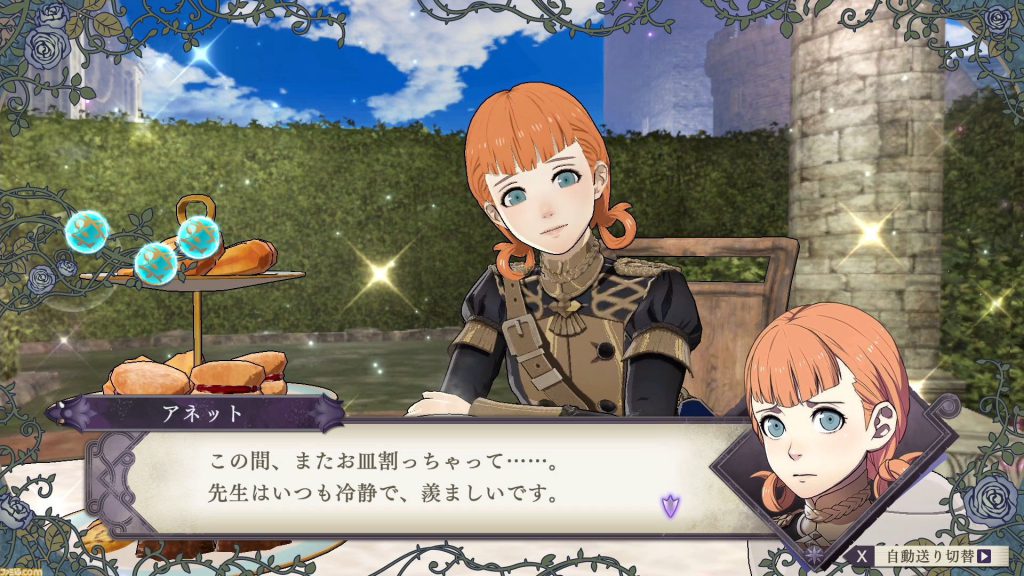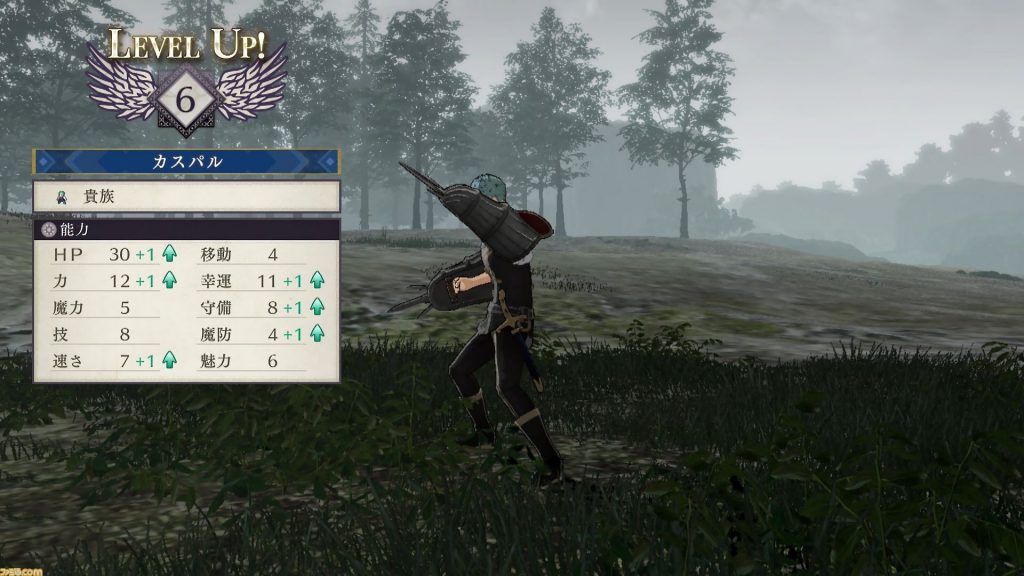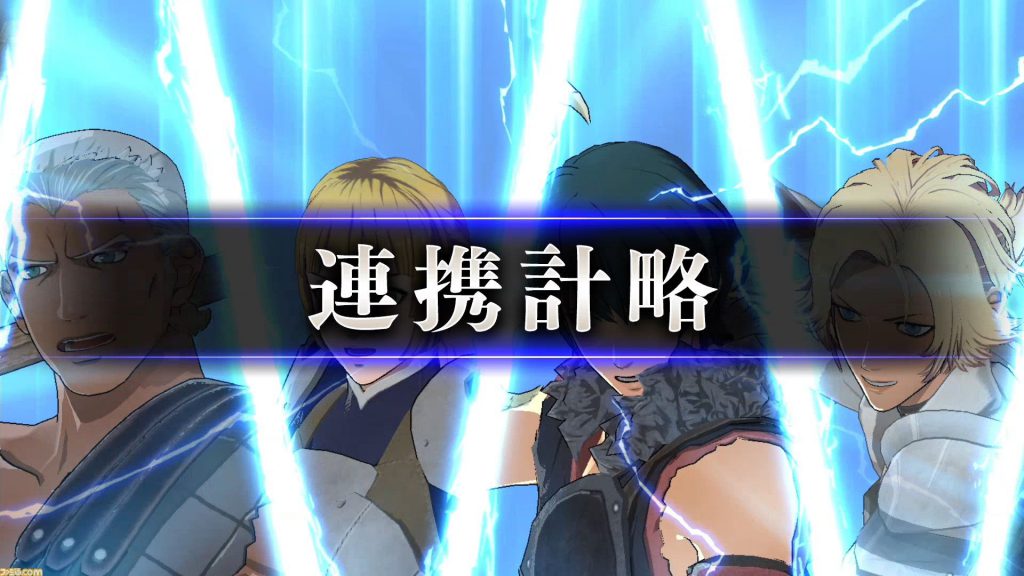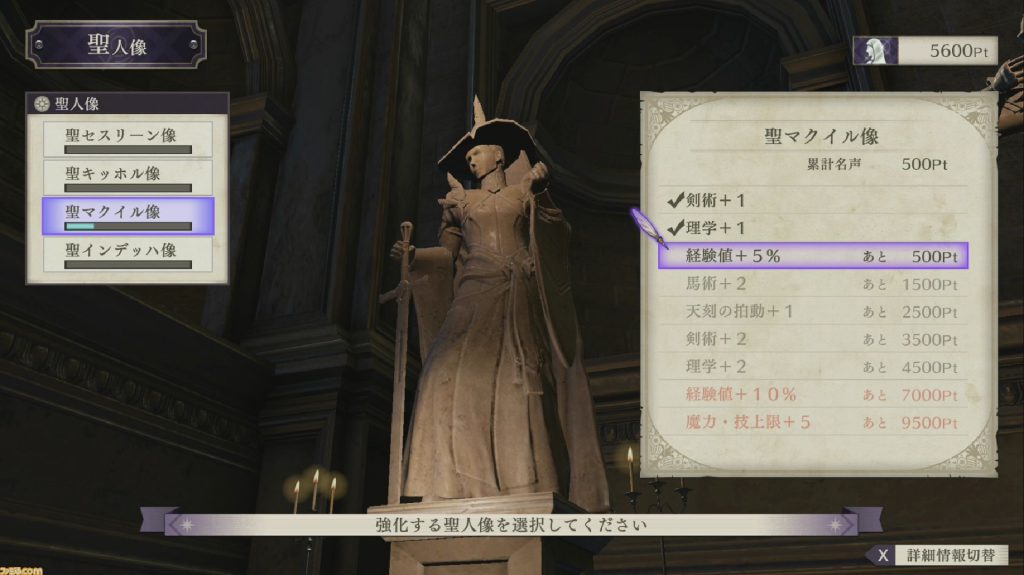Today, the latest issue of Famitsu was released. The big news is that the magazine gave Three Houses a score of 37/40 [9, ,9, 10, 9]. At the time of writing, the review text is not available, but to be honest it’s rarely important. (Source)
This puts the game as one of the highest scoring FE titles, on par with Echoes, and one point above Mystery of the Emblem, Binding Blade, Awakening and Fates. Of course, if you’re dubious about Famitsu’s reviewing credibility, you have every right to be.
Correction: My brain wasn’t functioning properly for some reason. Three Houses scored higher, not lower than the five four games I mentioned.
In other related news, the new issue of Famitsu also includes a special pre-launch feature for the game. There are 8 pages of summarised information from previous issues of Famitsu (aka nothing new), plus play reports from three of Famitsu’s writers. You can find translations of the latter below.
The Writers
- Lipsaiton — Played nearly every FE game. Picked the Black Eagles.
- Professor Tsutsumi — Has been a decade since they last played a FE. Picked the Blue Lions.
- Godzilla Outa — Completely new to the series. Picked the Golden Deer.
You can really taste the flavour and charm of “FE” in this game!
I’m Lipsaiton, a writer who’s been playing the FE series since the very first game. If you ask me about my gameplay impressions, I feel like the game system has undergone a big change, but the core flavour and charm of the series remains the same.
For this title, from the way the characters heads turn, the visuals have become more realistic. The game system, specifically the way you raise characters has been greatly enhanced. Mechanics, like the way units fight while leading battalions, are really innovative. Since FE Fates, the appearance and game system has changed a lot; could it even still be considered the same kind of game? I thought about this and there are probably many series fans thinking the same. But in the end, these concerns will probably end up being swept away.
In terms of raising characters, by improving “skill levels” through education etc., you can learn new abilities and combat arts, and it’s possible to change into new classes. Battle-wise, there are additional factors when it comes to raising, besides just increasing level, and you can enjoy increased freedom for crafting your characters. In previous games, a character’s growth was dictated by their initial class and growth rates, but in this title, there’s an emphasis on the player being able to freely decide what skills to focus on (although each character has skills they’re good or bad in). Learning and equipping abilities, choosing a weapon, and settling on a class–these are all key decisions and the resulting headaches you’ll have is part of what makes the FE series. Up to now, you can enjoy a more rewarding form of raising compared to past titles.
The battles look beautiful, but the basic rules are the same as ever. Actually, it reminds me of FE Radiant Dawn. Of course, you’ll analyse your units and enemies stats, and consider the minute difference in stats; the strategic depth is alive and well. In addition to your regular attacks, there are new ways to attack: you can unleash “combat arts”, which eat up a lot of weapon durability, and “gambits”, which can only be used when a battalion is deployed. Gambits are notable for ignoring enemy counter-attacks and the battle difficulty will probably change depending on if you choose to use them or not. There’s no real downside to deploying battalions except for the cost to hire them, so it’s usually a good idea to have them.
Also, you should pay attention to the “link” system, which is similar to the powerful support system featured in previous games. “Gambit boosts” occur when you trigger a gambit while being able to link with nearby allies who can attack the same enemy. In this game, as characters increase their “support level”, the effects of a link will increase. I really liked the FE-like game system that focuses on the levels of support and unit placement–and it’s more fun to think about than ever! Heart symbols (a sign of increasing bonds) can appear on 5 or so units after a battle, and when this happens, it can feel pretty nice. As an aside, another notable feature in this game is the ability to efficiently gain support points by interacting during weekend activities.
For me, all the things I wanted from the FE series can be found in this game, and I was thoroughly able to enjoy it. Is it a completely different game because everything looks so different? Series fans who are thinking this, please rest assured! I am confident that if you play the game, you will be able to enjoy the same flavour and charm as other FEs you’ve known and loved!
–Lipsaiton
The academy’s youth and the impending war! My emotions are shaken by so much personality
I’m Tsutsumi, a long-time player of the FE series. It’s kind of brash for me to say this, but this game was more interested than I anticipated, to the point that I forgot to work because I was so engrossed. When talking about the FE series, it has the image of being hard to swallow, but players can choose their own difficulty, so I think this is a title that can be casually played by those who are more interested in the characters and story.
The player takes on the role of the protagonist, who’s a teacher at the Garreg Mach Monastery, but with all the similar aged students around, academy life is your typical youthful affair. As you study, eat, play and live together, your adoration for your students will become stronger and stronger. To tell the truth, the first impression when I started was “Geez, there’s a lot of characters! How will I remember them all…?”, but each character has a strong personality. In my long time at the academy, I’ve come to really love the characters, saying things like “Oh, they’re fond of sweets”, “So is this lost item yours?”
Personally, I really admired the balance between the school part and the fighting part. Rather than the simplistic flow of battles ending with event scenes and then preparing for the next battle, the range of things players can do like fishing, shopping and quests, etc. is really broad and you’ll never bored. After completing a tense battle, when I return to the academy to mingle with students, I say things like “That was nicely done”, “You want to focus on this” and it really makes me feel like a teacher. It’s also cool that there are many ways to train, not just through battles, like instructing and seminars. In this game, players personalities can really shine.
As for the system, the strategic elements left a good impression on me, like being able to wield most weapons regardless of class and using “gambits” to attack without worrying about counter-attacks. The effects of “gambits” are diverse, such as stopping enemies from moving, increasing the movement of allies or allowing counter-attacks regardless of range. Furthermore, since “gambits” are attached to the “battalions” that follow each character, because you can swap battalions, it’s fun to figure out which are the best ones to use.
Anyway, as our earlier article revealed, the game’s story is split into two parts. Depending on the house you choose to lead in the first part, the story in the second part can diverge greatly. As I continue my academy life, my heart is overwhelmed by an indescribable feeling that “These good kids will all be fighting each other in the second part…?” There’s a lot of content, but I haven’t reached the second part yet; that said, there have been gripping developments regarding the world and the secrets of the characters, which are slowly becoming clear. As for myself, the game is so addicting that I’ve already decided that I’ll be playing with all three houses!
–Professor Tsutsumi
I was hooked when it came to raising characters!
I’m Godzilla Outa, a writer here. First of all, I want you to know that I love RPGs, but when it comes to strategy games, I’m a super duper rookie. But this game is a strategy RPG. That means it’s half a RPG, so I tried to play it despite my reservations. I don’t think there are too many worried people going “I’m terrible at strategy games, but I want to buy Three Houses”, but I still think it’s helpful information for people in the same situation as me.
In this game, the story progresses in big chunks with each passing month (a season in the game). At each month’s end, there will be a mission that involves an actual battle. In preparation for this, students can be tutored during weekdays to improve their skills, and on weekends, you’re free to move around–as the protagonist–to battle alongside students or take a walk around the monastery.
When I played the game for a bit, my first intense feeling was during the battles. I would move my units while predicting the enemy’s movements and taking into account their attack range, and I got really stressed. As I painstakingly planned my movements, during the enemy turn, they’d eat a lot of attacks and end up dying. But despite being in a constant state of hope and fear, I found myself having a great time.
Then I noticed that you can battle during the free time on weekends. If you choose this, you can battle as much as you’d like and farm experience points. Basically, you need to spend activity points to battle during weekends, but on Normal difficulty, there’s always a map you can play endlessly (although on Hard, you will need to spend activity points for this map). This was my favourite part, as someone who likes to raise characters. I started by making characters stronger with the free battle. Perhaps you can make battles go by easier by powering up your characters, rather than relying on strategy, even if it takes longer? That’s the idea I had. That said, since your characters are low level at the start, even though it’s a free battle, you still can’t be careless. But once I repeated it a few more times and leveled up more, it obviously became easier to grind.
The moment you can feel your characters have grown is the best delicacy for a RPG lover like myself. It’s lots of fun when you’ve been fighting for hours, then you notice that you can defeat multiple enemy units with one unit. It’s like I’ve been training in the “hyperbolic time chamber”. After a while, I start to move strong units with weak weapons to the front lines, letting them wound enemies with their counter-attacks. Then I rush a unit I’m training to finish off the enemy and gain lots of experience points. Man, it feels good! As your characters get stronger, you can easily defeat foes and save money by using cheap weapons. Which is the best of both worlds. For me, this is the ultimate fun!
Also, if your character’s level and skill levels go up, you can take an examination to change to a beginner or intermediate class. If you change to a new class, you’ll be further incentivised to make your characters stronger. Thanks to my delicate planning so far, the mission at the end of the month is always an easy win for me. If you trained at a normal pace, an enemy like the Death Knight could bring you to your feet, but with my huge power difference, I slaughtered him in a single round. This sense of invincibility is the best! I reckon narrowing your characters into a small group of elites, or challenging intense battles with the bare requirements, these are part of what make strategy RPGs so great, but my way of playing is also valid, right?
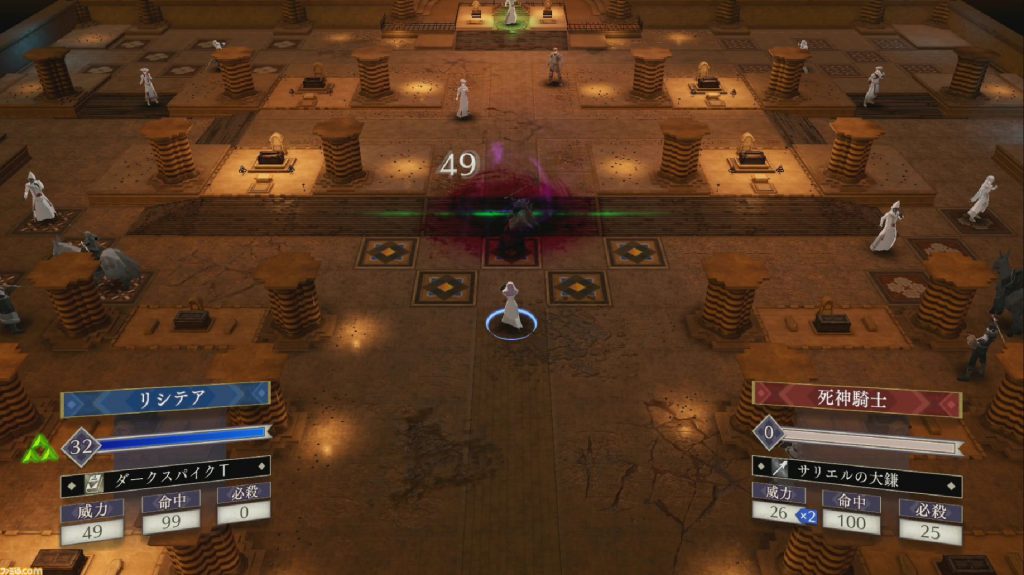
Lysithea is equipped with Dark Spikes T, which shares its name with a skill belonging to the secret boss from Shadows of Valentia…
When “exploring” during weekends, as well as socialising with students and those living in the monastery, you can take on quests, have meals at the dining hall with interested students to increase your support points, grow crops in the greenhouse, go fishing and do many other things. You can see your “activity points” while exploring and some activities like eating with students will consume some points, so even if you want to, you can’t if you have zero points. Still, you’re free to keep exploring even if you have zero points (but you obviously can’t do anything that requires points).
There’s a lot to do while exploring the monastery, but the most interesting thing is that you can recruit students from other houses. In this game, near the beginning, you will choose to lead one of the houses, and you–the protagonist–will be assigned as the teacher of that house. While tutoring and end of month missions are done with the students from your house, you can also recruit other students while exploring and add them to your own. I choose the Golden Deer, but I wanted to make Mercedes from the Blue Lions my waifu. However, just increasing your support relationship isn’t enough, you can be refused if your stats and skill levels, as requested by the student, aren’t up to scratch. Therefore, it’s vital to improve the protagonist’s capabilities. Recruiting other students can be difficult early on, but the process of setting goals and training the protagonist is also fun in itself.
Also, there’s a surprising amount of lost items in the monastery. But if you pick them up and return them to their rightful owner, you can earn support points. Every item has its own characteristic, like an item could belong to somebody “who likes to train” and it’s fun to try and guess who dropped it. Even so, the people in the monastery sure have dropped a lot of things (laughs). By the way, when your support relationship has risen enough, an event will occur for the involved characters. As the support level increases, there will be advantages during battle, but more than that, there’s the desire to see these events, and you’ll emphathise with your favourite characters. Because of that, I searched every nook and cranny of the monastery for lost items (laughs). Unrelated to lost items, there are some certain gift items, which can be given to anyone to raise their support points. However, you’ll earn more points if the recipient has an affinity for the gift.
Additionally, as you progress the story, there will be battle tournaments where you can enter students, saint statues where you can spend renown to earn various effects such as lance instruction gain +1 or experience +5%, plus many more things like that. It’s fun to raise your characters through battle, but the monastery has its own charm, where you can completely lose track of time as you explore. Also, your activity points increase as your protagonist’s professor level increases (which can be done by earning experience points via exploring and weekday studies), so as you keep playing, you’ll be able to perform more actions while exploring the monastery and really expand your enjoyment.
As mentioned above, this is a play report from the eyes of a strategy RPG novice who’s still in the middle of the first part. In a RPG, there’s always the promise of “if enemies are too strong, you can level up to beat them” and this holds true here; despite being a strategy RPG with an image of being really hard to get into, this is a game you can fully enjoy like a typical RPG. Even so, the story’s progression is getting really, really good! I would like to keep going while enjoying the battles, naturally by leveling my characters in the free battles!
–Godzilla Outa
Finally, this issue of Famitsu promises a whopping 40-page walkthrough of the game for the issue that releases on 25th July 2019. I imagine this will cover a large part of the academy phase of the game. It’s also possible they’ll have details for characters, classes and abilities–but that’s just a guess.
